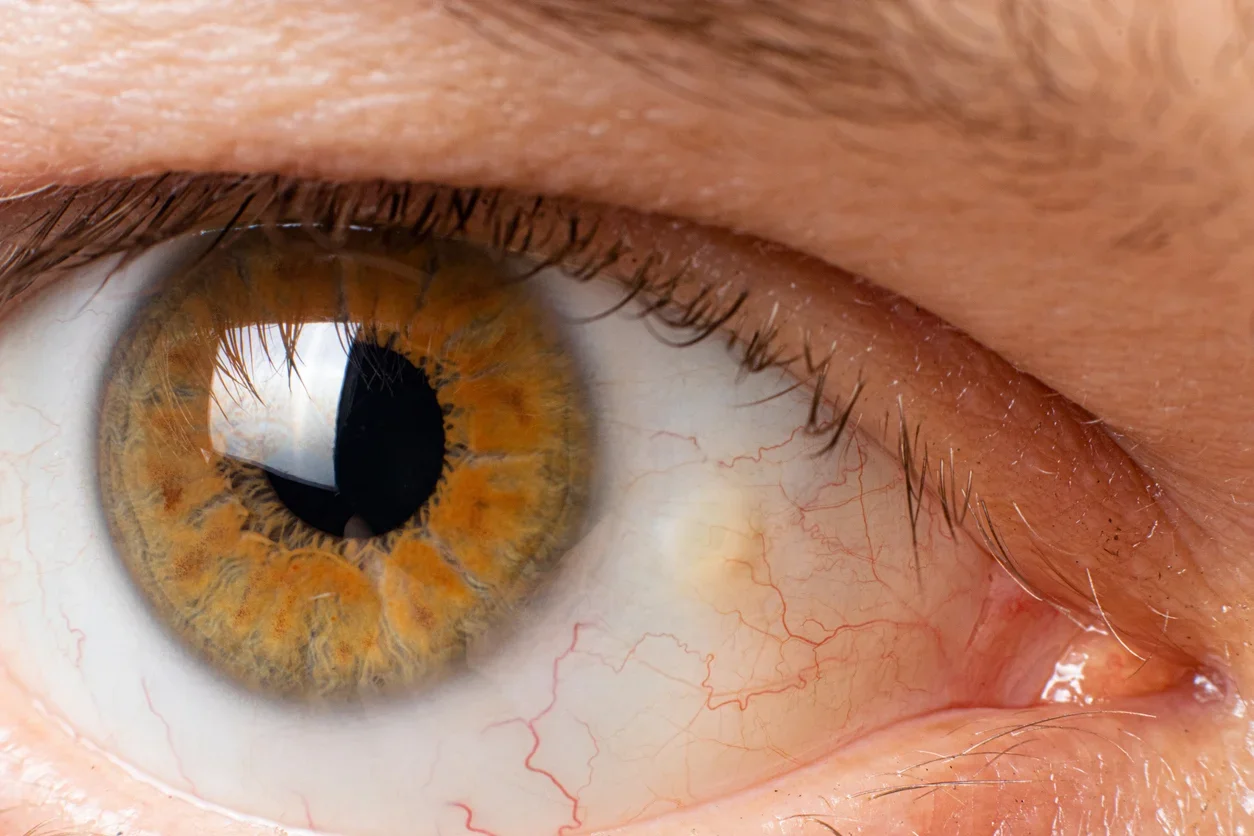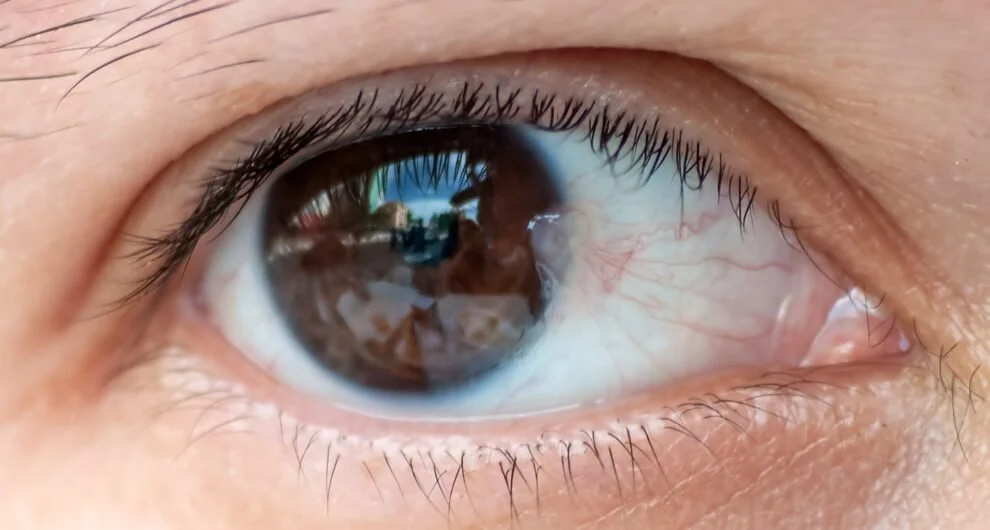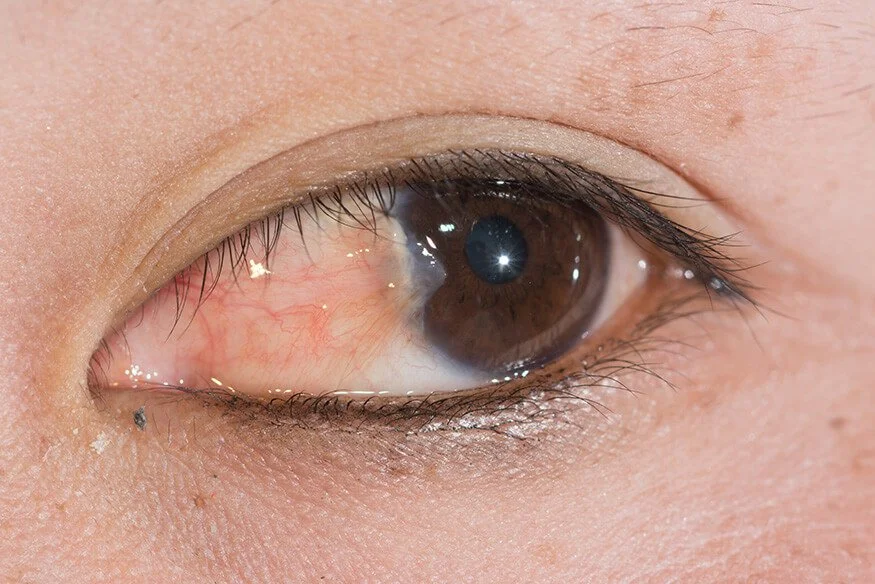Pterygium Surgery Without Stitches — Dr Brendan Cronin Ophthalmologist
A pterygium is a fleshy tissue growth that develops on the conjunctiva, the clear membrane covering the white part of the eye, and may extend onto the cornea, the transparent window at the front of the eye. This abnormal growth, often referred to as “surfer’s eye”, is strongly linked to long-term exposure to ultraviolet light, hot and dry weather, and environmental factors such as dust and wind.
Australia, especially regions along the pterygium belt, has one of the highest rates in the world due to its sunny climate and outdoor lifestyle. Prolonged exposure to UV radiation causes changes in the conjunctiva tissue, triggering the growth of abnormal blood vessels and fleshy tissue that can affect both appearance and eye health.
Why Choose Dr. Brendan Cronin for Pterygium Surgery in Brisbane?
Dr Brendan Cronin is a fellowship-trained corneal surgeon with extensive experience in advanced pterygium surgical treatment, including extended conjunctival autograft and sutureless techniques. These modern methods allow for highly successful outcomes with excellent cosmetic results and extremely low recurrence rates.
Symptoms and Common Features of Pterygium
A pterygium usually appears as a triangular wedge of fleshy tissue extending from the inner corner of the eye toward the cornea. The most common symptoms include:
Persistent redness or inflammation
A gritty, burning, or itchy sensation
Chronic irritation that worsens in dry or windy conditions
Increased tearing or watering of the eyes
Sensitivity to sunlight and ultraviolet radiation
As the growth progresses, the clinical features may include irregular astigmatism, corneal scarring, and vision problems.
Environmental Factors and Causes of Pterygium
The development of a pterygium is strongly influenced by excessive exposure to the sun’s ultraviolet radiation. People who spend a lot of time outdoors—such as surfers, farmers, and outdoor workers—are at particularly high risk.
Other contributing environmental factors include:
Hot and dry weather conditions
Long-term exposure to wind and dust
Living in tropical or subtropical climates
Lack of protective eyewear outdoors
The Cleveland Clinic and other international health organisations emphasise that protecting the eyes from ultraviolet radiation is one of the most important preventive strategies.
How is Pterygium Diagnosed?
A pterygium can usually be diagnosed during a routine eye examination. An eye doctor will carefully assess the growth using a slit lamp, which provides a magnified view of the eye’s surface and cornea.
During diagnosis, the specialist will:
Look for signs of blood vessels extending into the corneal area
Assess whether the patient is experiencing chronic eye irritation or blurry vision
When to Recommend Surgery for Pterygium
Pterygium treatment depends on the size of the growth, the severity of symptoms, and whether vision is affected. An ophthalmologist may recommend surgery if:
The pterygium is causing vision problems or inducing astigmatism
Persistent chronic irritation does not improve with medications
Dr Brendan Cronin explains to his patients that a pterygium is often compared to an iceberg—the part you see on the surface is much smaller than the portion extending beneath the normal tissue. For this reason, pterygium extended removal is essential to reduce recurrence and achieve a long-lasting result.
Modern Pterygium Surgery and Techniques
Dr. Cronin performs advanced sutureless pterygium surgery, delivering excellent cosmetic and visual outcomes. Unlike the older bare sclera technique, which had higher recurrence rates, modern surgery involves extended conjunctival transplantation or an amniotic membrane graft to cover the affected area with healthy conjunctiva tissue.
Key benefits of the modern surgical approach include:
Sutureless technique: Glue is used instead of stitches, making recovery more comfortable.
Improved cosmetic results: Minimal scarring and a natural appearance.
Extremely low recurrence rates: Extended grafting techniques significantly reduce the regrowth of hair.
Patient comfort: Performed under local anaesthetic and sedation, ensuring the patient remains asleep and pain-free.
During the operation, the pterygium is carefully excised, including the portion hidden under the upper eyelid or wrapped around eye muscles.
Recovery After Pterygium Removal
After surgery, patients usually wear an eye patch for the first day to protect the eye. It is normal to experience minor irritation, redness, or inflammation; however, these symptoms typically improve quickly with prescribed medications.
Recovery involves:
Regular use of steroid eye drops and lubricants to reduce inflammation
Avoiding contact lenses until the eye has healed
Protecting the eyes from the sun’s ultraviolet light using sunglasses
Having a responsible adult with you for the first night post-surgery
Most patients notice a significant improvement in comfort and vision within a few weeks. With modern sutureless methods, recovery is faster and less painful compared to traditional stitch-based procedures.
Advice From Dr. Brendan at Focus Vision in Brisbane
Focus Vision and other respected international eye institutes highlight that pterygium (surfer’s eye) prevention and management depend heavily on early diagnosis and lifestyle adjustments. Since high UV exposure is the leading risk factor, individuals who spend a significant amount of time outdoors are particularly vulnerable. If left untreated, a fleshy overgrowth, such as a pterygium, can enlarge and eventually require surgical treatment to restore comfort and vision.
Practical tips include:
Wearing a wide-brimmed hat and wrap-around sunglasses daily to block ultraviolet light
Using lubricating eye drops during hot and dry weather to reduce irritation
Seeking early care if chronic eye irritation or blurred vision develops
Consulting an eye doctor regularly, especially if you live in high-risk areas along the pterygium belt, where pterygium grows more commonly
Preventing Recurrence of Pterygium
Even after successful surgery, there remains a possibility of pterygium recurrence, which can sometimes occur in the same eye. To minimise this risk, ophthalmologists recommend a combination of protective strategies and consistent follow-up care.
To reduce recurrence, patients should:
Wear sunglasses (preferably UV-blocking wrap-around lenses) whenever outdoors
Attend follow-up visits so healing can be closely monitored
Use artificial tears during hot and dry weather to maintain a healthy eye surface





